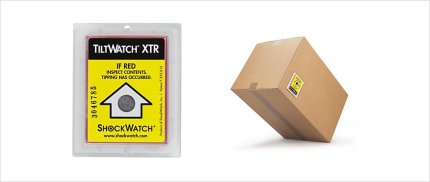
Rajapack has a rich heritage of reusing cardboard – back in 1954, when Rajapack was founded (named “Cartons Raja” back then), the company originally sold reused cardboard as a cheaper alternative to buying new boxes. Being environmentally friendly is still at the centre of Rajapack’s DNA. Things might be a little different now, but this history is still an important reminder that cardboard doesn’t need to be wasted.
Nowadays there’s more than one way to repurpose old cardboard boxes. We’ve picked out some of the best and most innovative reuses of cardboard out there to help you figure out what to do with all those boxes:
Recycling

Most local districts have their own cardboard recycling system, making it easier than ever to recycle those old moving boxes!
Gardening

On top of that, cardboard can make a great barrier against weeds or a strong protection for plants against damage from things like trampling. For weed control simply place a few layers of cardboard down in problem areas and the weeds will struggle to get through. You can even use old boxes filled with soil to create raised beds for new planting.
Cardboard can also help with germinating seeds: embed a few seeds in a dampened piece of cardboard and place beneath the soil and the cardboard will help the plants to grow.
Organisation

Other odd jobs can make use of cardboard – cutting sections out to make labels, for example, or sign making at home events. There is also, of course, repurposing cardboard boxes for gift giving around birthdays or the holiday season.
Here’s a handy tip: some of the smaller and stronger boxes can be used as makeshift shelving. Apply metal clips to bind the edges of a few sturdy boxes together (all of a uniform size), then turn the boxes on their side and use the openings as shelf space.
DIY

You can also use cardboard to patch up small roof holes until a more permanent and professional solution can be found. Protect the cardboard with plastic covering and place it under the shingles.
Again, storage can be an option here: easy access and cut price tool storage units can be easily fashioned out of cardboard.
Get creative

Creative cardboard reuse can take quite a few forms. A classic example would be to use the box a as toy – we all remember the joy of being given free reign of a cardboard box as a kid!
Others have taken cardboard reuse a little more seriously than just the odd application around the house. One company called Recompute, for example, have made a cardboard computer, with all the wiring held between layers of fibreboard. The trend of cardboard furniture has even begun to emerge, with anything from chairs to lamp shades being made.
Zero Waste Home
To get some tips and some expert insight into reusing cardboard, we had the chance to catch up with Bea Johnson, author of Zero Waste Home:

A: For the sake of the environment, it is important to prioritize reusing before recycling. The recycling process takes energy and resources; that loss can be avoided with reusing. Thanks to its weight and recyclability, cardboard has replaced many of the plastic items that we used to buy. For example, our kids use cardboard school binders instead of the laminated kind.

A: To lead a Zero Waste lifestyle, my family applies 5R’s in order (Refuse-Reduce-Reuse-Recycle-Rot). Reuse precedes Recycle, so we prefer to repurpose the cardboard that we cannot first Refuse or Reduce.
Q: Do you think people today make enough of an effort to reuse and recycle in general?
A: Your question is timely. I visited a waste transfer station last weekend and watched people unload cars and trucks full of (what they consider) “rubbish”. The material that jumped out at me as being the most prevalent and yet, widely recyclable, is cardboard. Our society makes it too easy to underestimate the value of our planet’s resources, but consumers need to, and can easily, rise above this needless waste.
Q: What would be your top tips for reusing cardboard? Are there any specific things cardboard can be used for in the home?
A: Since we exclusively buy food in bulk from the health food store and essentially buy household goods second-hand from the thrift store, the little cardboard that makes its way into our home is from our kids’ school binders and toilet paper rolls (the only single-use item we purchase). If we don’t have cardboard on hand and need some, we go dumpster diving!
Top tips wise, here are some great ways to reuse cardboard:
–Shipping something: When you receive a parcel, put the box aside to use for your own mailings. After all, your purchase likely paid for it, so why not reuse it instead of buying a new one at the post office?
–Padding: Speaking of mailing, cardboard can also be cut to the size of an object to protect it during shipping.
–Craft making: Why buy card stock when the very same material sits in your recycling bin? Our family no longer buys or stores art materials at home. When we need some for a school project, we reach into our recycling bin and use whatever bits of paper or cardboard we can find.
–Packing for a move: If you’re planning an upcoming move, start collecting large boxes in a spare room now. If not, make the ones you still have from your last move available to others by posting them on a classified ad.
–Moving furniture: Rather than carrying heavy pieces of furniture, set them on cardboard and slide them around. This will save your hardwood floors, and more importantly your back!
–Donating your stuff: Our household has been refusing plastic and paper bags since 2008, so when time comes to donate the kids overgrown clothing, we keep an eye out for a cardboard box to pack and transport our donation to a local charity.
–Protecting your floor: Whether you need to protect your floor from a paint job, heavy traffic during a remodel, or your toddler’s food throwing skills, cover the area with unfolded cardboard boxes. But remember: if food comes in contact with cardboard, it’s best to compost it (vs. recycling it).
–Playing pretend: Give a child an empty cardboard box and you’ll open a whole imaginary world for him/her. It can be more than a house or a rocket ship: my son’s friend, Camilla, once went to a costume party dressed as a gift!
Sources: About.com; Castlereagh.gov.uk; MNN; DoItYourself.com; HowStuffWorks
Images: Wikipedia; Wikipedia; Wikipedia; Wikipedia; emzo-12.deviantart.com




















magnificent submit, very informative. I wonder why the opposite specialists of this sector do not understand this. You must proceed with your writing. I’m confident, you have a great readers’ base already!
“Excellent blog you have got here.. It’s difficult to find
quality writing like yours these days. I seriously appreciate people like you!
Take care!!”
Thank you for your comments.
I like that you mentioned that you can always get creative turn your cardboard recycling into creative art projects. I have been moving and I have a ton of cardboard boxes that I’ll have not much use for after the move. I’ll have to turn some in for recycling and also save some for some nice fun projects!
I have a question .
How many pros and cons of Cardboard Recycling?
Hi Carlos, that’s a great question. The term ‘recycling’ has a broad meaning and so depending on which aspects of cardboard recycling are being questioned influences the factors involved. With such considerations as manufacturing processes and the entire lifecycle of the cardboard to consider, it is difficult to provide a number of pros and cons of cardboard recycling. Hopefully this has helped you!
Great post. So useful – thanks!